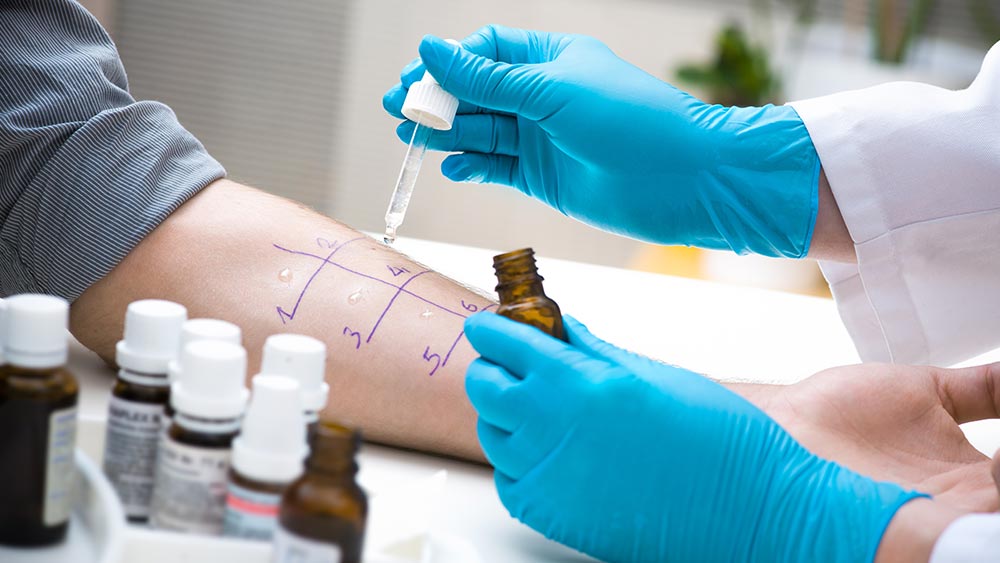
Aug 27, 2025
Blog pharmaceuticals A World Allergic to Allergies: The Market That’s Fighting Back
Sneezing, itching, swelling, coughing, millions of people around the world face these symptoms daily due to allergies. From seasonal hay fever to life-threatening anaphylaxis, allergies impact lives in countless ways. But as science advances, so do our methods for diagnosing and treating allergic conditions. The global allergy diagnostics and treatments market is growing rapidly, driven by rising allergy cases, awareness, and technological progress.
Allergies are no longer considered minor health issues. They affect quality of life and productivity and, in severe cases, pose serious health risks. As the demand for accurate diagnosis and effective therapies increases, the global market is evolving to meet the challenge.
According to market research, the global market for allergy diagnostics and treatment is projected to grow from $67.8 billion in 2025 to $96.4 billion by the end of 2030, at a compound annual growth rate (CAGR) of 7.3% from 2025 through 2030.
The global allergy diagnostics and treatments market has grown steadily over the past decade. Factors such as urbanization, changing lifestyles, climate change, and pollution are contributing to the rising prevalence of allergies, especially in developing countries. Conditions like asthma, allergic rhinitis, eczema, and food allergies are now more commonly diagnosed than ever before.
This increased burden has led to a surge in demand for advanced diagnostic tools and innovative treatment options, creating opportunities for biotech firms, pharmaceutical companies, and diagnostics developers globally.
Several key trends are fueling the growth of this market:
Studies estimate that up to 30–40% of the world’s population now suffers from some form of allergy. Air pollution, changing dietary habits, and extended exposure to allergens are significant contributors, particularly in urban settings.
Traditional methods like skin prick testing and blood-based IgE testing are being enhanced with molecular diagnostics, component-resolved diagnostics (CRD), and point-of-care allergy tests. These innovations allow faster, more accurate, and personalized diagnosis, improving treatment outcomes.
Public health campaigns, rising patient education, and easier access to specialists have led to earlier detection and management of allergies, especially in children, where early intervention can prevent chronic symptoms.
The allergy treatment landscape is broadening from antihistamines and corticosteroids to immunotherapy and biologics. Subcutaneous and sublingual immunotherapy (SCIT and SLIT) offer long-term relief, while biologic drugs like omalizumab are transforming the management of severe asthma and chronic hives.
The global market for allergy diagnostics and treatment is projected to grow from $67.8 billion in 2025 to $96.4 billion by the end of 2030, at a compound annual rate growth (CAGR) of 7.3% from 2025 through 2030.
Accurate diagnosis is crucial in allergy care. The market for allergy diagnostics includes:
Newer digital and AI-based tools are emerging, offering real-time results and aiding allergists in making faster decisions.
While many treatments offer symptomatic relief, long-term management is the evolving goal. The treatment segment includes:
As personalized medicine advances, treatments tailored to specific immune profiles are gaining momentum, offering hope to patients with chronic or treatment-resistant allergies.
This regional diversification encourages cross-border partnerships, research investments, and clinical trial expansions.
Allergy diagnostics and treatments also intersect with environmental and social concerns. Environmental allergens like pollen, mold, dust, and air pollutants are key culprits, and addressing them requires coordinated ecological health policies. Additionally, ensuring affordable allergy care access in underserved populations is emerging as a critical public health goal.
As the number of allergy sufferers continues to climb, the need for precise diagnosis and effective treatments has never been greater. The global allergy diagnostics and treatments market is not only expanding, it’s evolving. Innovations in diagnostics, personalized therapeutics, and digital tools are reshaping the future of allergy care.
From quick relief to long-term management, the market is working toward solutions that help millions worldwide breathe easier, every single day.
Consider becoming a member of the BCC Research Library and gain access to our full catalog of market research reports in your industry. Don't see what you are looking for? We offer custom solutions, too, including our new product line: Custom Intelligence Services.
Contact us today to find out more.

Sandeep is a Senior Executive in Marketing Operations at BCC Research, proficiently serving as a graphic designer and content creative specialist. His expertise extends to AutoCAD and Revit, and he has made valuable contributions to the event industry with his design skills.

Over the past decade, immunotherapy has reshaped the landscape of modern medicin...

The fight against cancer is undergoing a powerful transformation, and Targeted A...

Alzheimer’s disease has long been one of the most challenging neurological disor...

We are your trusted research partner, providing actionable insights and custom consulting across life sciences, advanced materials, and technology. Allow BCC Research to nurture your smartest business decisions today, tomorrow, and beyond.
Contact UsBCC Research provides objective, unbiased measurement and assessment of market opportunities with detailed market research reports. Our experienced industry analysts assess growth opportunities, market sizing, technologies, applications, supply chains and companies with the singular goal of helping you make informed business decisions, free of noise and hype.